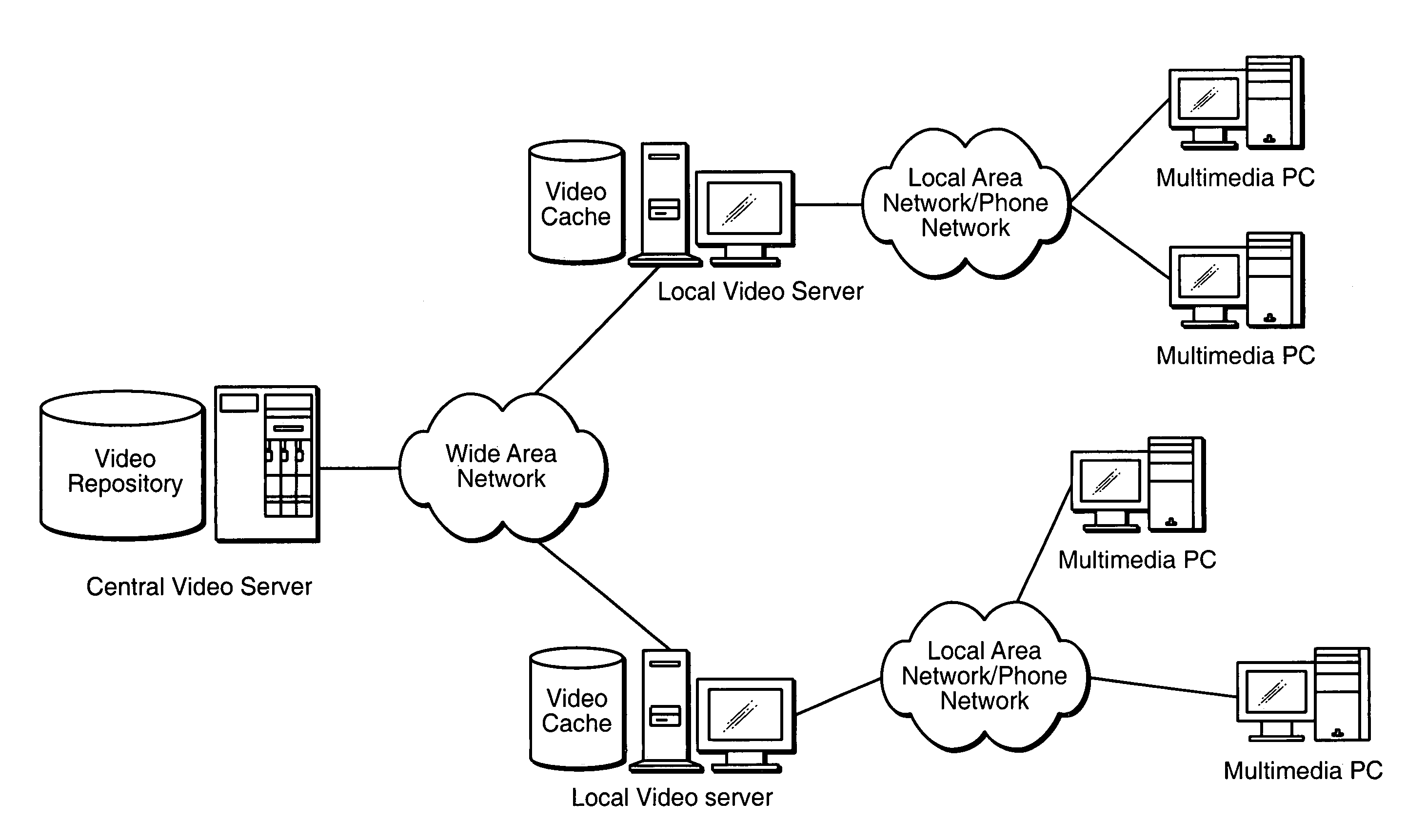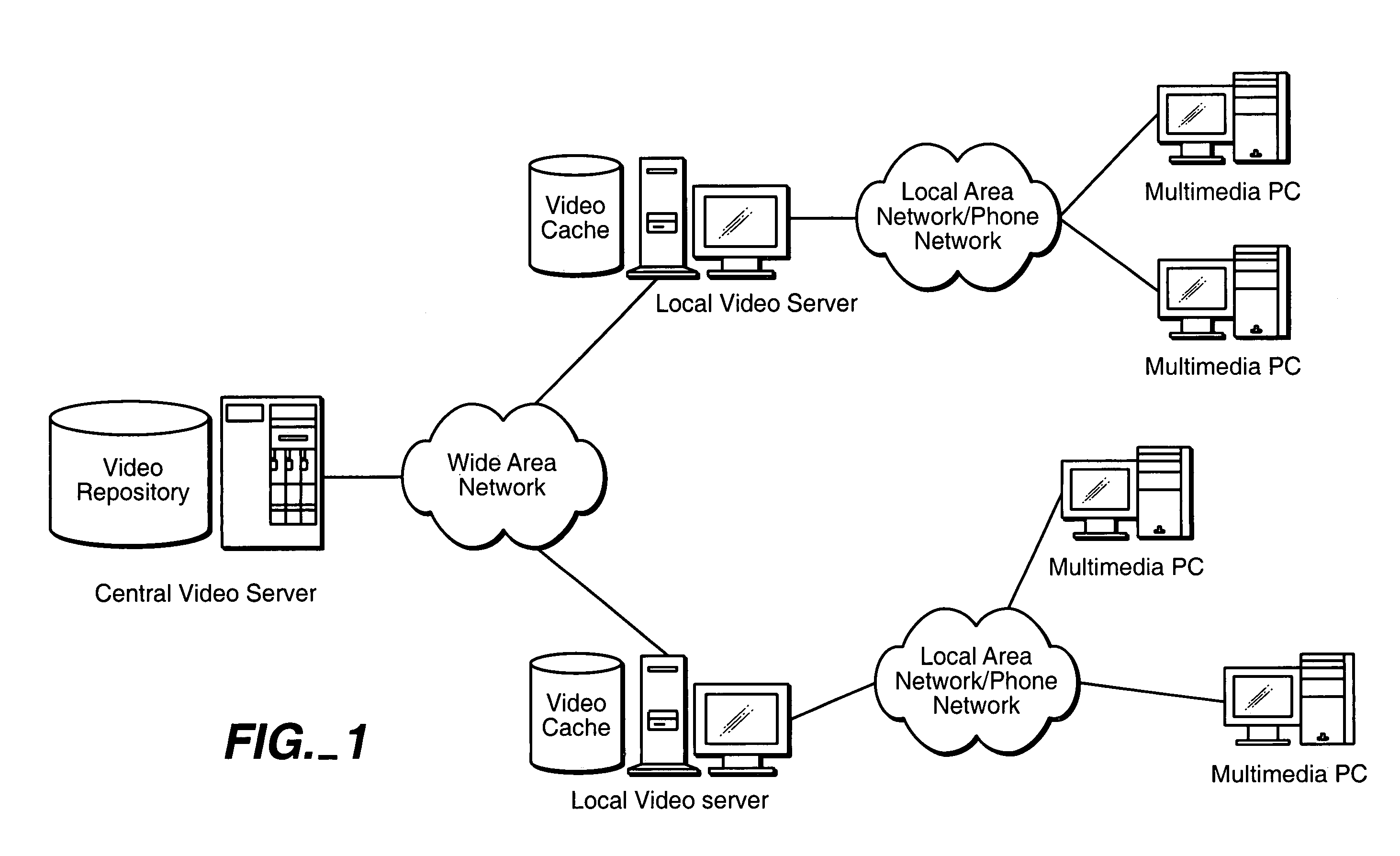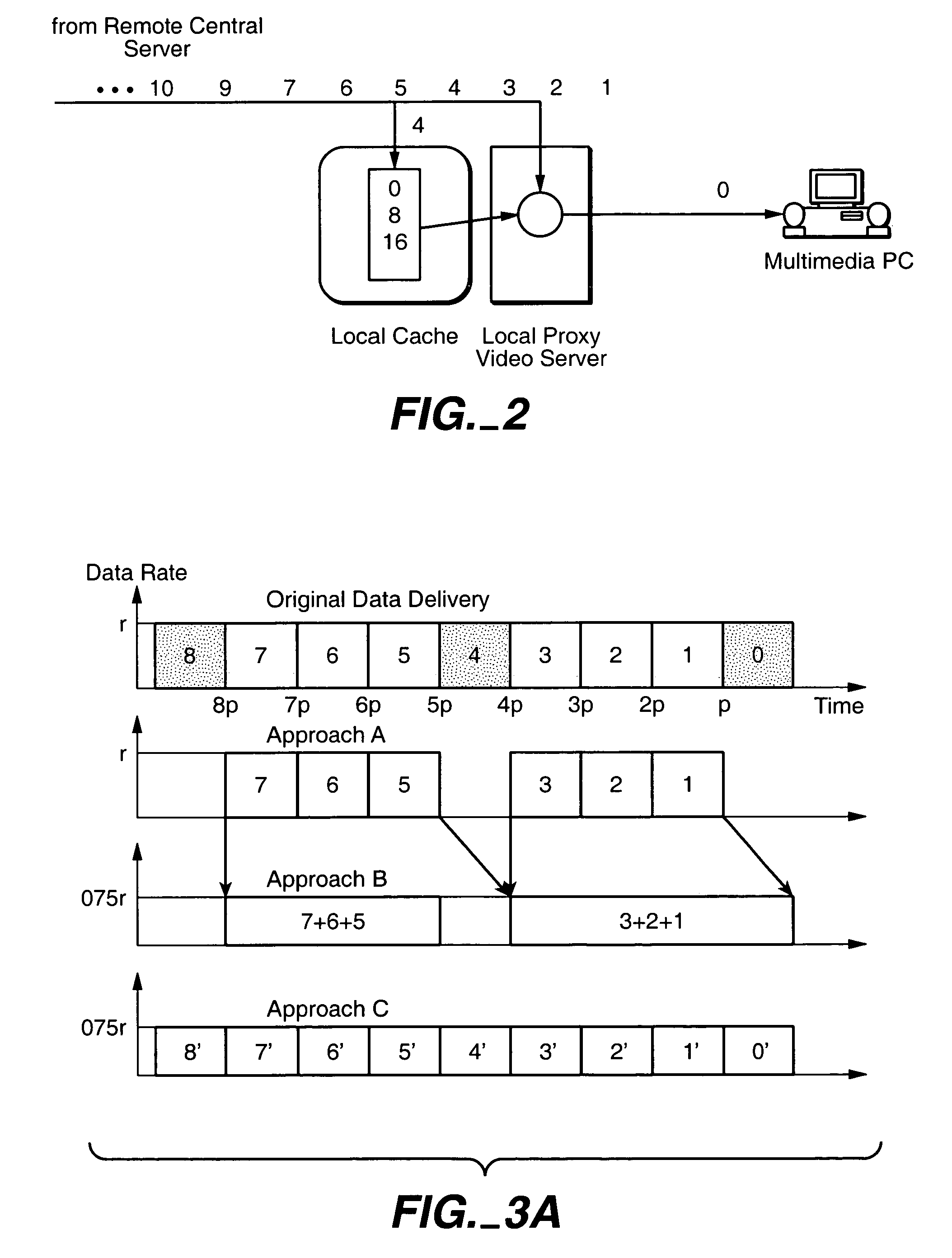Method and apparatus for caching for streaming data
- Summary
- Abstract
- Description
- Claims
- Application Information
AI Technical Summary
Benefits of technology
Problems solved by technology
Method used
Image
Examples
case b
[0084]According to further embodiments of the invention, the local proxy server begins the caching process after receiving a video playback request from an end user as follows:[0085]Step 1: Make sure there is sufficient front end network bandwidth to deliver the new request. No matter whether the video data is ultimately delivered from the remote central server, the local proxy server, or both, the local proxy needs to deliver it to the user site. This demands sufficient front-end networking bandwidth, otherwise, the local proxy will deny the request.[0086]Step 2: Deliver the video data to the user site. Depending on the new request and current cache content, there are three possible cases: cache hit, cache miss, and partial cache hit.[0087]Case A: Cache hit. The proxy server has complete content of the newly requested video title. The local proxy server itself can deliver the video data provided that there is available local disk bandwidth retrieving the data out of the local disk ...
case c
[0090]For the situation of not enough local disk bandwidth (whether there is available disk space), the caching will be called off. It means the proxy server will redirect the incoming data traffic (from the central server) to the end user without caching any data locally.[0091] Partial cache hit. The proxy server has partial copy of the newly requested video title stored in its local disk drives. This situation is very similar to the cache miss scenario except some of the requested data will come from the proxy server. This implies the request will consume less backbone bandwidth resource (to deliver the data not in the local proxy), the access bandwidth of the local disk drives (to retrieve the local cached data out and to write the newly cached data that is not already cached from the central server into the local disks), and the disk space to store the newly cached data. Within the step, the request manager (see FIG. 6) in proxy server keeps track of accesses of and also refresh...
PUM
 Login to View More
Login to View More Abstract
Description
Claims
Application Information
 Login to View More
Login to View More - R&D
- Intellectual Property
- Life Sciences
- Materials
- Tech Scout
- Unparalleled Data Quality
- Higher Quality Content
- 60% Fewer Hallucinations
Browse by: Latest US Patents, China's latest patents, Technical Efficacy Thesaurus, Application Domain, Technology Topic, Popular Technical Reports.
© 2025 PatSnap. All rights reserved.Legal|Privacy policy|Modern Slavery Act Transparency Statement|Sitemap|About US| Contact US: help@patsnap.com



